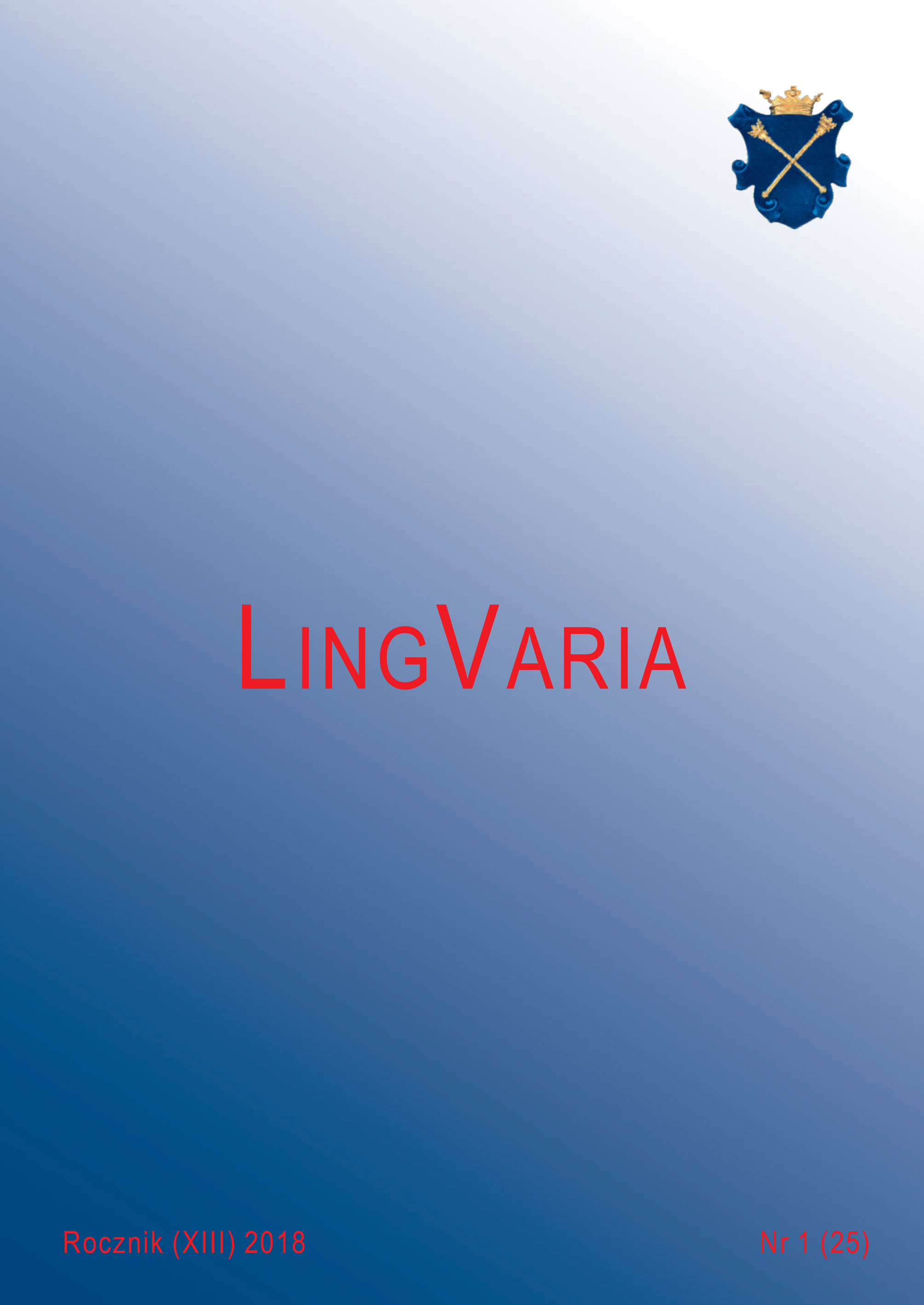Gra znakami i znaczeniami w polskim artystycznym plakacie teatralnym
DOI:
https://doi.org/10.12797/LV.13.2017.25.18Słowa kluczowe:
plakat teatralny, multimodalność, system semiotyczny, interpretacja, teoria amalgamatów kognitywnychAbstrakt
Play on Signs and Meanings in Polish Artistic Theatre Posters
The paper begins with the assumption that an artistic theatre poster is composed of two interacting semiotic systems: the language (the title of the play, the name of the author, the place of stage production, the name or signature of the author of the poster, the year of its creation), and the image (graphic signs, meaningful typography, graphical arrangement, colour scheme). These two codes are interwoven; linguistic signs often fulfill the function of the image in multimodal messages, and vice versa. The application of the category of multimodality allows us to superimpose the meanings of iconic images, mental images, and images hidden behind words, when reading the content of a poster. In artistic theatre posters, verbal and visual signs play with senses and allow the reader to activate different contexts, which leads to a multitude of interpretations. Recipients are not obliged to read the creative, multimodal message in a single, prescribed way. They are free to follow various parallel interpretative routes. Signs of the poster play with each other and with the reader, and the entire meaning of the multimodal message can change as one of the multiple senses of a word, an image, or a colour is singled out.
Pobrania
Bibliografia
Barthes R., 1985, Retoryka obrazu, tłum. Z. Kruszyński, „Pamiętnik Literacki” LXXVI, s. 289–302.
Bateman J., Wildfeuer J., Hiippala T., 2017, Multimodality. Foundations, Research and Analysis – A Problem-Oriented Introduction, Berlin – Boston.
Bolek E., 2015, Interpretacja plakatu artystycznego jako działanie na tekstach, [w:] S. Niebrzegowska-Bartmińska, M. Nowosad-Bakalarczyk, T. Piekot (red.), Działania na tekście. Przekład, redagowanie, ilustrowanie, Lublin, s. 257–267.
Bolek E., 2016a, Metodologia amalgamatów kognitywnych w interpretacji plakatów artystycznych, [w:] B. Skowronek, E. Horyń, A. Walecka-Rynduch (red.), Język a media. Zjawiska językowe we współczesnych mediach, Kraków, s. 223–234.
Bolek E., 2016b, Transformacje znaków z przestrzeni publicznej w plakacie społecznym, [w:] M. Karwatowska, R. Litwiński, A. Siwiec (red.), Konwencja i kreacja w tekstach kultury, Lublin, s. 83–90.
Jeleński K.A., 1994, Od bosości do nagości, [w:] W. Gombrowicz, Iwona, księżniczka Burgunda, Ślub, Operetka, Historia, Kraków, s. 333–369.
Kaźmierska E., 2007, „Golgota Jasnogórska” Jerzego Dudy-Gracza. Stapianie pojęć w siatkach wielozakresowych, [w:] A. Libura (red.), Amalgamaty kognitywne w sztuce, Kraków, s. 113–126.
Knorowski M., 2009, Efekt zwierciadlany, [w:] P. Rudziński (red.), Pierwsze półwiecze polskiego plakatu 1900–1950. Studia, Lublin, s. 203–249.
Kosyl C., 1978, Metaforyczne użycie nazw własnych, [w:] M. Szymczak (red.), Z zagadnień słownictwa współczesnego języka polskiego, Wrocław, s. 133–143.
Kress G., Van Leeuwen T., 2001, Multimodal Discourse. The Modes and Media of Contemporary Communication, London.
Rzepińska M., 1966, Studia z teorii i historii koloru, Kraków.
Skowronek B., 2013, Mediolingwistyka. Wprowadzenie, Kraków.
Szewczyk A., 2014, Lekcja widzenia, [w:] eadem (red.), Henryk Tomaszewski – Byłem, czego i wam życzę, Warszawa, s. 45–47.
Tokarski R., 2013, Światy za słowami. Wykłady z semantyki leksykalnej, Lublin.
Tomaszewski: Wciąż chcę nie umieć. Z Henrykiem Tomaszewskim rozmawia Joanna Paszkiewicz-Jägers, „Polityka” 1988, nr 25, s. 7.
Winiarska J., 2016, Plakat jako przykład multimodalnego amalgamatu, „LingVaria” nr 2 (22), s. 43–55, [on-line:] http://dx.doi.org/10.12797/LV.11.2016.22.03.
Pobrania
Opublikowane
Numer
Dział
Licencja
Prawa autorskie (c) 2018 Elwira Bolek

Utwór dostępny jest na licencji Creative Commons Uznanie autorstwa – Użycie niekomercyjne – Bez utworów zależnych 4.0 Międzynarodowe.






